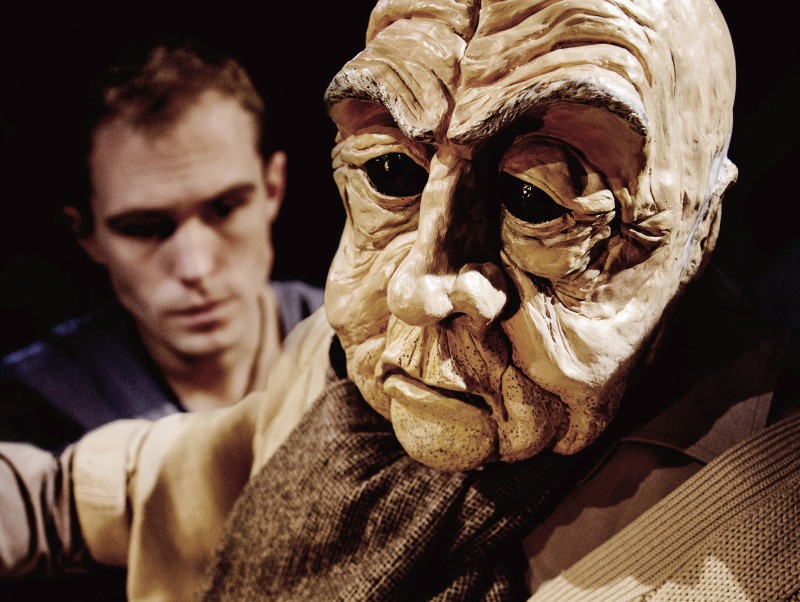 Young company Sparkle and Dark have been creating and touring puppetry-led visual theatre since 2009. Their work has followed an interesting trajectory, moving from the sort of fantastical storytelling that is puppetry’s natural habitat into more serious subjects: 2012’s The Girl with No Heart tackled the impact of Hiroshima and Nagasaki from a child’s point of view. Killing Roger, which started life through the Little Angel’s increasingly influential artists’ development programme last year, continues this trend by exploring assisted suicide.
Young company Sparkle and Dark have been creating and touring puppetry-led visual theatre since 2009. Their work has followed an interesting trajectory, moving from the sort of fantastical storytelling that is puppetry’s natural habitat into more serious subjects: 2012’s The Girl with No Heart tackled the impact of Hiroshima and Nagasaki from a child’s point of view. Killing Roger, which started life through the Little Angel’s increasingly influential artists’ development programme last year, continues this trend by exploring assisted suicide.
Any story tackling issues of death and dying is a gift for puppetry, with its innate aptitude for portraying physical decline and, of course, what we might term the in-animation of death itself. In addition, the theme of ageing also opens up some strong puppetry metaphors: increased reliance on others, a sort of alienation from the body as it changes, that are powerfully identifiable. The company mine these possibilities in a very well developed performance, at its strongest when attacking one of the fundamental questions of puppetry on stage – who the puppeteers are and why they are there. Shared between three performers, the moments of passing the animation of human-scale puppet Roger between them become very rich comments on identity and caring that are clever and moving.
The company have developed a sort of heightened realism: the space is dominated by the cluttered arrangement of Roger’s sitting room-cum-kitchen, whilst the rest of the stage works more metaphorically through thoughtful lighting design and simple props. Objects on stage are charged and unwieldy: making a cup of tea becomes a Herculean task (commenting perhaps on the realities of disabled living as well as building into the puppet logic). This real / poetic dramaturgy is also manifest in the writing which switches between real exchanges within scenes and the central character Billy’s conflicted comments on the above. This allows for useful zooming in on key moments as the relationship develops, but can sometimes feel overwritten and Billy overwrought. It’s true that he has been through a traumatic event – and the eponymous act is shocking despite the certainty with which we know it’s coming – but placing most of the storytelling at this pitch is wearing after a while and starts to flatten out the material, making it feel more one-note than it really is. Sequences where we encounter more unadulterated storytelling – Roger’s memories for example – come as a relief.
The puppetry is strong and detailed, with excellent voice work rendering Roger fully believable and accessible, and the company are doing good work in pushing puppetry into new, less obvious territories and for new audiences. But, as it’s new, there’s still more to discover, and in this darkest of stories, I longed for a little more light and shade to add shape to the storytelling and to allow us to relax a little more in Billy’s world and make a show that really entertains whilst it innovates.

